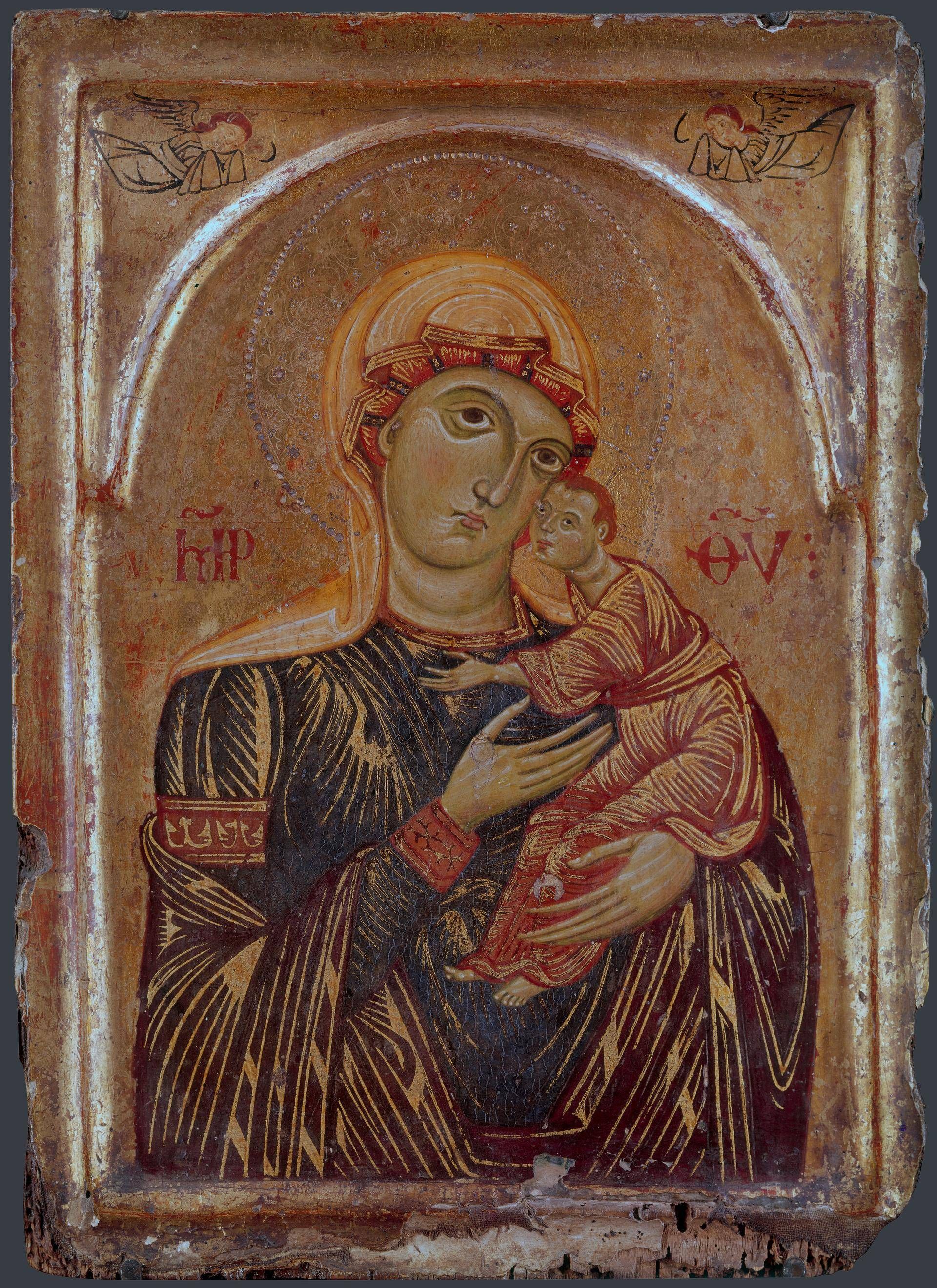
The Virgin and Child with Two Angels
This small panel painting of the Virgin and Child was, until its theft in the 1970s, one of the earliest pictures in the National Gallery. Only The Virgin and Child Enthroned, with Scenes of the Nativity and the Lives of the Saints - a large altarpiece - is of a similar date.
Probably painted in Tuscany in the thirteenth century, it was inspired by Byzantine painting. The infant Christ rests in the Virgin Mary's left arm and she points at him with her right hand, a famous image known as the Hodegetria, based on a miraculous icon of the Virgin owned by the Hodeon monastery in Constantinople. Although highly stylised, the pair are shown in an affectionate embrace, with Christ's head resting against Mary's cheek; this is an intimate picture of a mother and child. Like Byzantine icons, it is also highly decorative: the Virgin and infant Christ are set against a gilded background, their draperies are modelled in gold highlights and they are shown under a moulded arch with two angels in the upper corners. The letters on either side are Greek and stand for 'Mother of God'.
Byzantine art was hugely influential in medieval Italy, and icons were much revered. This kind of painting had a great impact on artists such as Duccio, and his Virgin and Child with Saint Dominic and Saint Aurea, and Patriarchs and Prophets shows a similarly emotional relationship between Christ and the Virgin.
This panel perhaps once formed part of a diptych, a painting made of two panels which folded together like a book for storage or transportation (like 'The Wilton Diptych'). The panel has hinge marks on the right, and the back is decorated with a cross with triangles and circles at the end of the four arms. The other half might be a panel now in the Museum of Fine Arts, Budapest, showing Christ on the Cross: it is the same size, has hinge marks on the left and has the same sort of cross painted on the back. Small diptychs like this were intended to be portable and were used for private devotion.
Many surviving pictures from the Middle Ages remain anonymous. Although the names of various artists have been associated with this painting, it is very difficult to make any satisfactory attribution or even to be sure what district of central Italy it comes from.
Credit: Presented by W.B. Chamberlin, 1934
early 1260s
Egg tempera on wood
36.5 x 26.5 cm
NG4741
Image and text © The National Gallery, London, 2025
Where you'll find this

Permanent collection